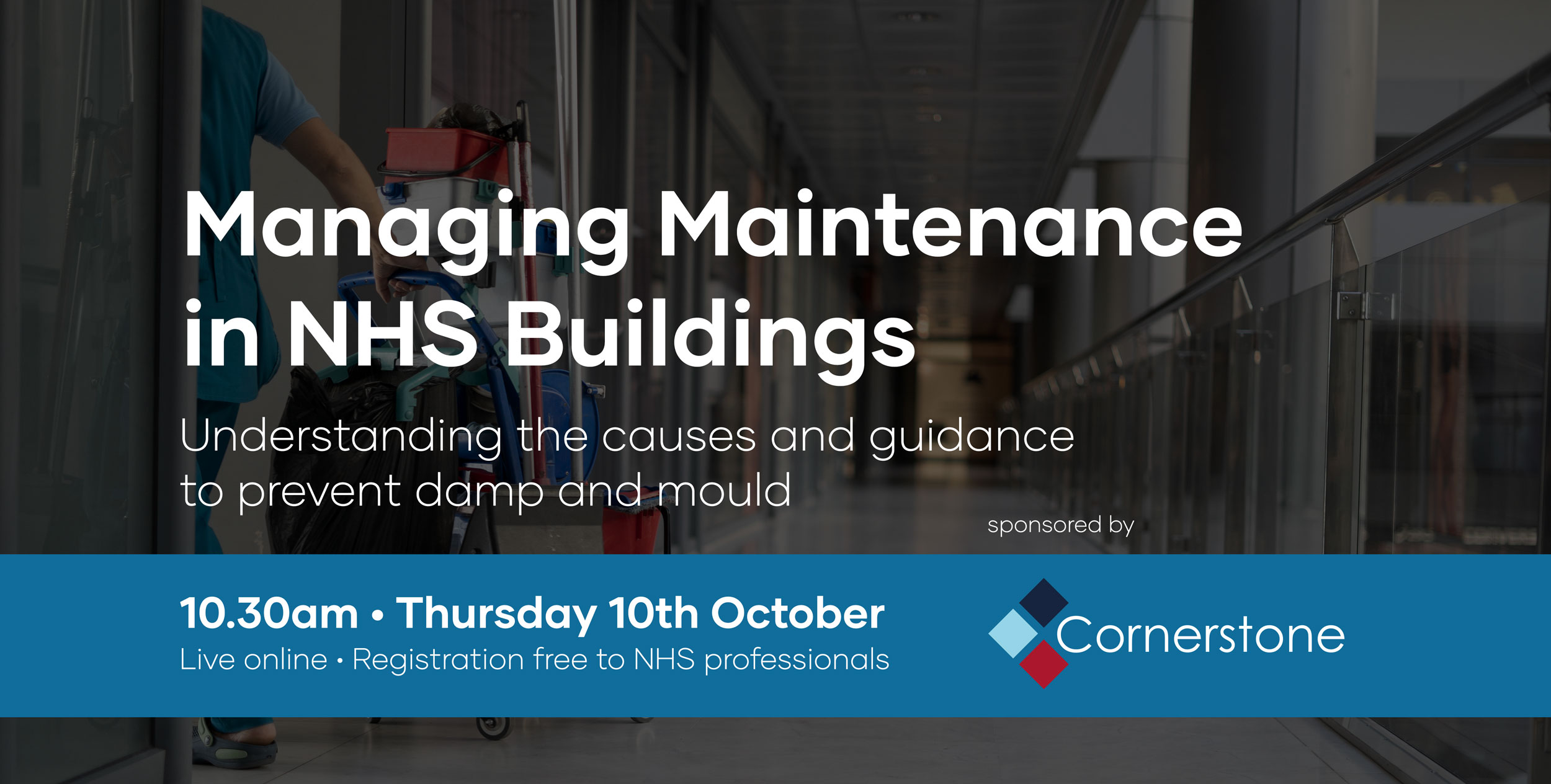Managing Maintenance in NHS Buildings
NHS buildings, which include 1,140 hospitals and 7,500 primary care sites, are especially susceptible to damp and mould because of their unique environmental conditions - high humidity levels and the presence of multiple water sources.
Of particular concern was a recent report in the Nursing Times, which noted that crumbling NHS buildings are forcing nurses to break bad news to patients in rooms that are mouldy, have stains on the wall and holes in the ceiling.
Managing Maintenance in NHS Buildings: Guidance on Damp and Mould will bring together a panel of health, building and air quality experts to discuss not just causes and preventative measures but solutions around effective ways to treat and minimise the damaging effects of moisture in NHS buildings.
The panel will also examine how smart working and a collaborative approach can result in finding solutions more quickly.


| 10.30 | Welcome & Event Overview Dr Hector Altamirano-Medina, Director, UK Centre for Moisture in Buildings / Associate Professor, UCL |
| 10.35 | Damp & Mould - Protecting patients and healthcare staff Louise Church - Health, Safety and Wellbeing National Officer, Royal College of Nursing |
| 10.45 | Spotlight on damp and mould David Hemming - Service Delivery Lead – Major Programmes, NHS Shared Business Services |
| 10.55 | Spore Wars - The NHS battle against mould Nathan Wood - Indoor Air Quality Group Chairman, Building Engineering Services Association (BESA) |
| 11.05 | Guidance for long term solutions to damp and mould: Understanding the root causes David Bly - Managing Director, Cornerstone |
| 11.15 | Developing an equity focused approach to improving indoor air quality Dr Douglas Booker - Co-Founder & CEO, National Air Quality Testing Services / Lancaster University Environment Centre |
| 11.30 | Panel discussion / Q and A session featuring today's speakers plus the interactive poll results |
| 12.00 | Event close Thank you's and further information |







